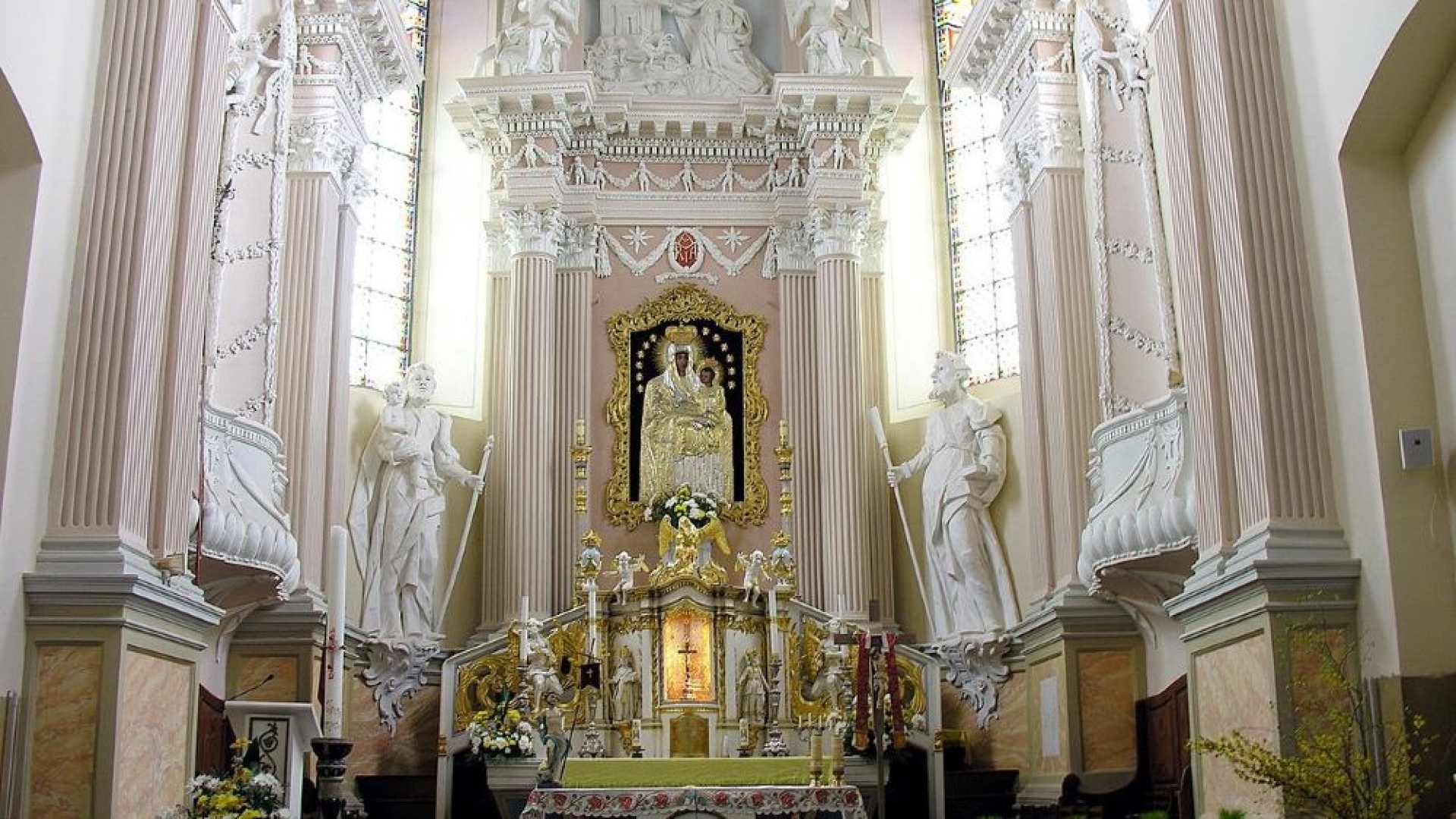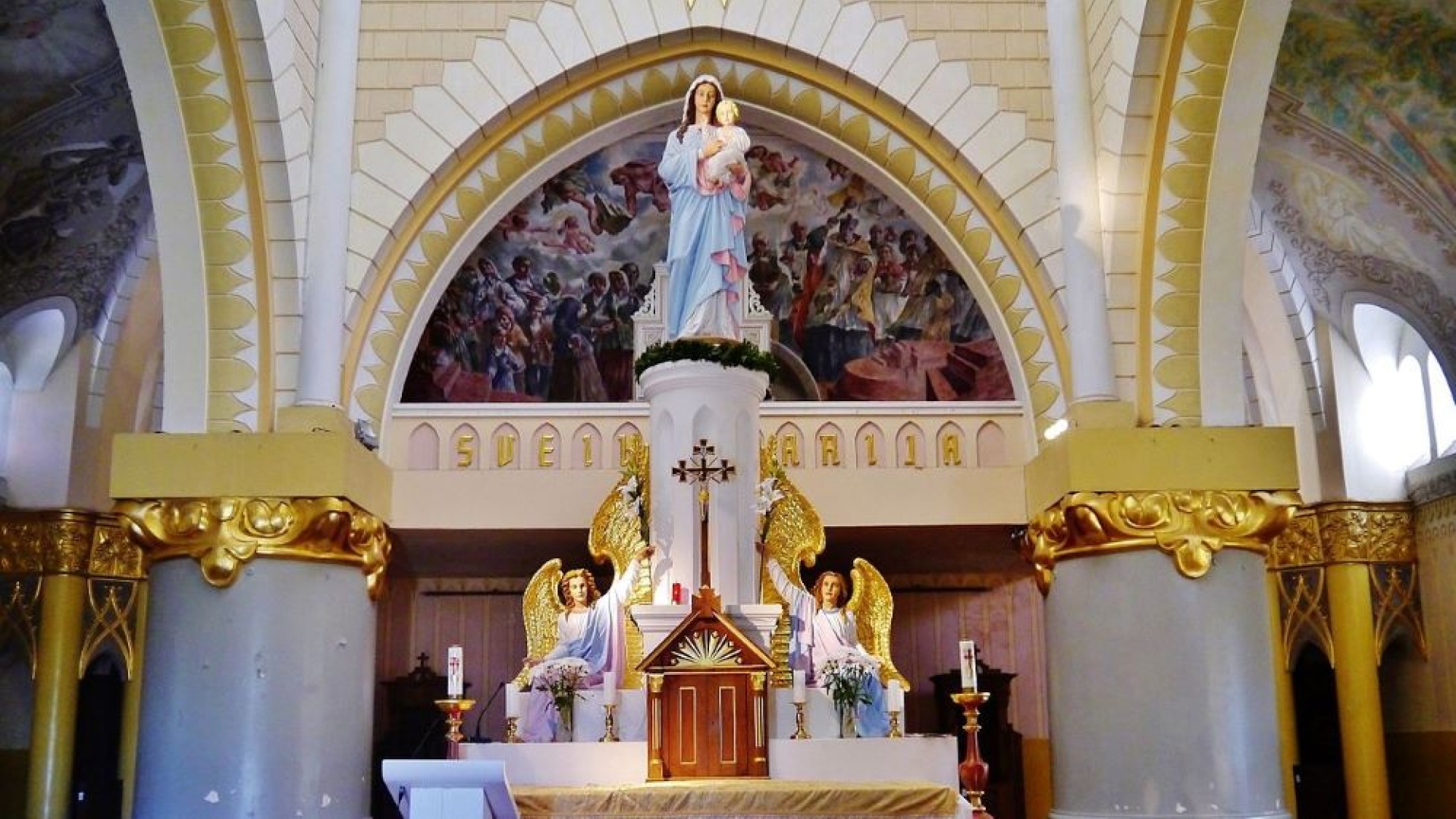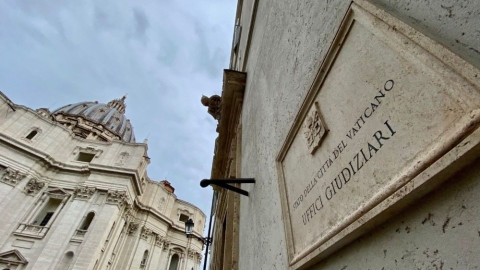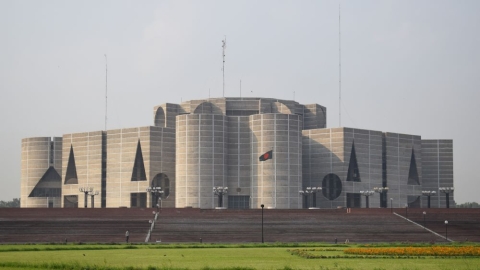Our Lady of Šiluva

Our Lady of Šiluva (Our Lady of the Pine Forest) is a name given to the Virgin Mary in Lithuania, related to an icon venerated since the fifteenth century, together with the Virgin and Child, appeared in 1608 in the ruins of a destroyed church.
Šiluva’s Marian devotion appeared practically a the beginning of Christianity in Lithuania.
The context
Lithuania was late in converting: Ladislas II Jagellon, baptized in 1387 during his marriage to the Queen of Poland, endeavored to spread the Catholic faith in his still page kingdom.
The first church
The construction of the church at Šiluva was due to the generosity of a nobleman, Petras Gedgaudas. In 1457, he allocated land for a sanctuary in honor of Our Lady which was then constructed. The church was dedicated to the Nativity of the Blessed Virgin Mary. An icon was taken from Šiluva to Rome and offer to Petras Gedgaudas. The church housing the icon rapidly became a celebrated Marian shrine.
In 1532, the population around Šiluva became majority Calvinist. Soon, many Catholic churches were confiscated and closed. The Marina shrine was closed in its turn. Around 1569, the last curé hid the precious objects in a chest, buried near the church.
The Protestant current then waged an iconoclastic war. They seized the churches, destroyed religious objects, and often burned the buildings. The Šiluva church was then burned. The upheaval passed, a law authorized Catholics to recuperate their seized goods, if they could prove their ownership.
The apparition
During the summer of 1608, some children who were looking after their sheep near the village of Šiluva, reported having seen “a beautiful woman holding a baby,” near where the old church stood. The lady was weeping bitterly. The news spread immediately. The children returned the next day accompanied by a small crowd and a Calvinist pastor. Everyone saw the apparition, and the Virgin in tears.
The pastor then asked the Virgin the cause of her sorrow; she answered that it was “because her beloved Son was no longer worshipped in this place as He had been.” To this news, an old blind man, who had assisted the parish priest to conceal the chest, pointed out the precise place where he had been buried: unearthed, it produced the documents attesting the property of the church.
Upon retrieving the chest, the old blind man recovered his sight. This was the first miracle attributed to the Virgin of Šiluva. In 1622, the property was restored to the Catholic Church, “several years later the entire region abjured Protestantism,” and returned to the Catholic faith.
A small wooden church, called the Nativity of the Blessed Virgin Mary, was built on the original site, and the recovered painting was placed on the main altar. Very soon, it became too small for the many pilgrims who came. A much larger church was constructed in 1641.
Veneration
Pope Pius VI recognized the authenticity of the apparition at Šiluva in a decree dated August 17, 1775. The same pope then permitted the crowning of the venerated image on September 8, 1786. The new basilica of the Nativity of the Blessed Virgin Mary was consecrated in 1786. The building is one of the most beautiful example of late baroque architecture in Lithuania.
Before the Second World War, processions left from all Lithuanian cities to go on pilgrimage to Šiluva. The 13th day of each month is known as Mary’s Day.
A “chapel of the apparition” was built in the neo-Egyptian and Gothic styles, on the rock where the Virgin stood at the time of the apparition, located under the altar of the chapel.
Patronage
Many Lithuanians’ return to the faith following the apparition, invokes Our Lady of Šiluva as patron saint of those who have abandoned the faith and of those who pray for them.

Chapel of the apparition
(Source : owlapps.net/Wikipédia – FSSPX.Actualités)
Illustration 1 : Algirdas at the Lithuanian language Wikipedia, CC BY-SA 3.0, via Wikimedia Commons
Illustration 2 : Zairon, CC BY-SA 4.0, via Wikimedia Commons





